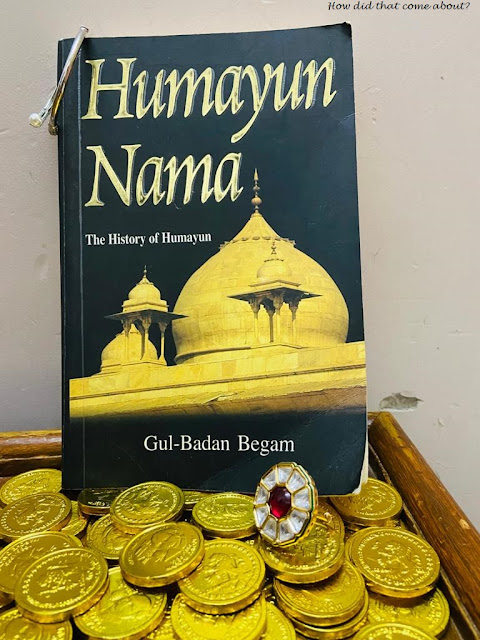The Humayun Nama and why it matters.
The
Humayun Nama and why it matters.
The Humayun Nama is the book on Humayun’s life written
by his half sister Gul Badan Begum in the 16th century. Written in
the Turkic language, the book begins with a brief history of Babur, then with Humayun’s
accession and his defeat at Kannauj and ends before 1555, when he tried to
regain Babur’s empire.
While the book provides a rare glimpse into Humayun’s
life, his equation with the royal household and his exile at Sindh, the book
also gives us up and close accounts and anecdotes about the royal family.
When she talks about Babur’s life, Gul Badan also
simultaneously mentions about the women back in Kabul. She describes the
apprehension at seeing Babur’s army leave for India, the joy in the household
when letters arrived detailing Babur’s minor victories, the celebration of Babur’s
letter after the victory of the First Battle of Panipat and the subsequent gifts
he bestowed on them. She also mentions, in brief, about the journey of the
women to India and their joy at meeting Babur after a span of almost a year.
While the Babur nama ends rather abruptly, Gul Badan fills
in some of the gaps. She mentions Humayun’s sickness and Babur’s sorrow. The
pages talk about a ritual Babur performed asking the Lord to take his life and
spare Humayun’s and later speaks about Babur declaring Humayun as his successor
on his deathbed.
Superbly written, one of the parts of the book is about
what happened after Humayun lost the battle of Kannauj. Gul Badan speaks about
how Kamran forcibly took her and some other women of the royal family to Lahore
with him before the battle began and how she was separated from her mother.
One of the most poignant part of the book details a ‘fork
in the road’. After Humayun escaped, with Hindal, from Kannauj, there was a
fork in the road where Hindal and Humayun decided to travel through different
roads, each one thinking theirs was the best. The description of the incident
is sure to tug at one’s heart strings and while she may not have intended it, that
paragraph is filled with symbolism closely related to the fate of the royal
family for years to come.
Reading the book might also give one information about
facts not known before. For instance, Gul Badan mentions how Hamida Banu Begum (Akbar’s
mother), did not initially want to wed Humayun and that she had to
be persuaded by Humayun’s stepmother for 40 days before she agreed to marry
him.
What I like the most about Humayun Nama is the subject
of the book itself. Humayun, while no Babur or Akbar, is a hero in his own
sense. Devoted to his son, what is reflected as I read these pages is Humayun’s
fortitude and his never say die spirit. After loosing everything, being turned away
from almost every place he sought exile, Humayun never every gave up. He persevered,
being able to take a few territories he could call his own and set off, in 1555
to take back what Babur had conquered.
Humayun’s very human story, from a youth expected to extend
Babur’s empire to someone who faced crippling defeat and rejection and
eventually managed to come back, makes him, in my humble opinion, one of the
greatest rulers of the Mughal empire, a ruler from whose life, we can learn lessons
applicable till today.
While he in no way extended his heritage, he was able
to take it back and preserve it, paving the way for later rulers to let this
empire eventually reach its zenith. If
he would have not come back, if he would have been satisfied with whatever little
territories he conquered later, we would have been studying a vastly different
history today.




Comments
Post a Comment